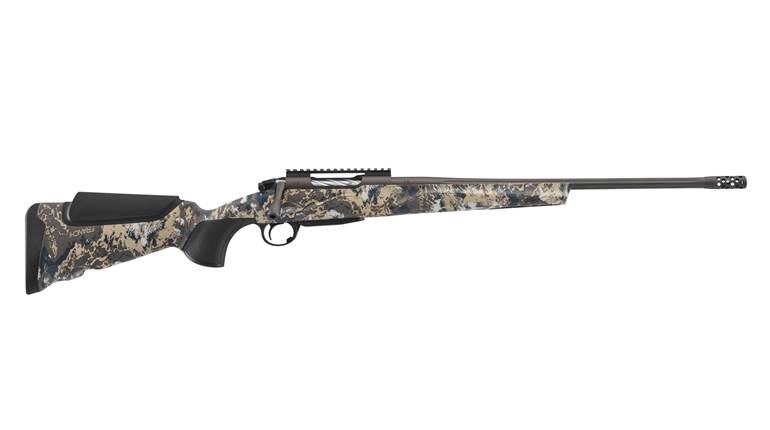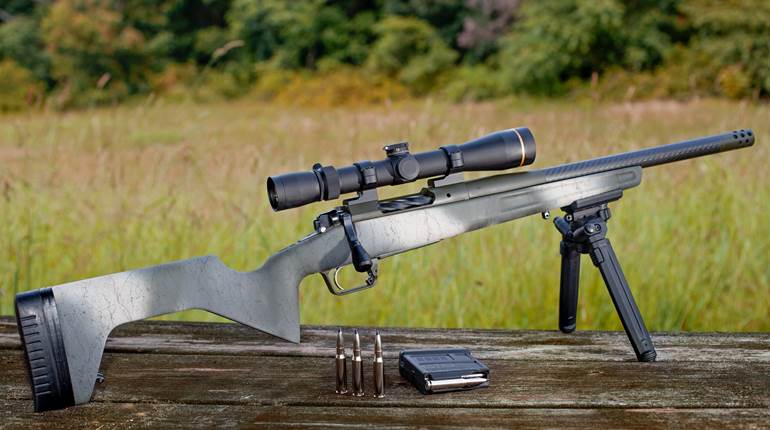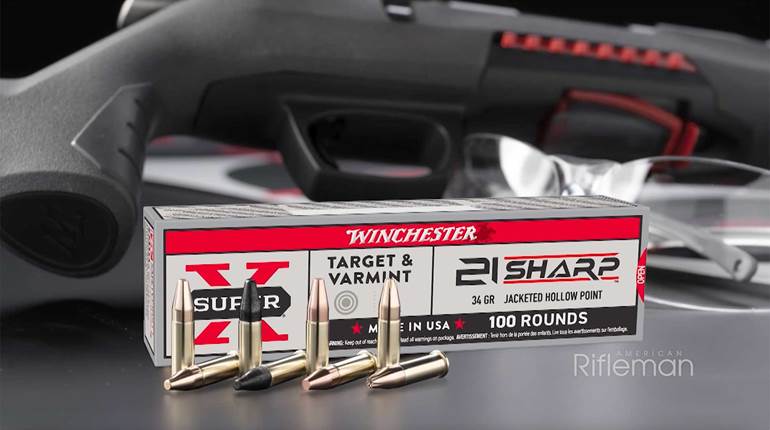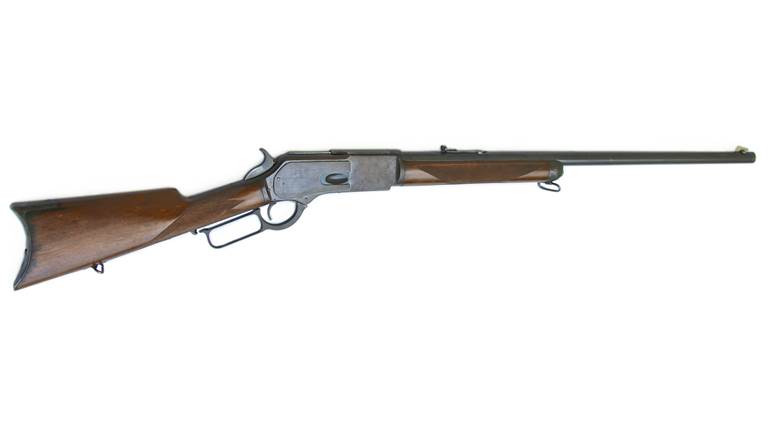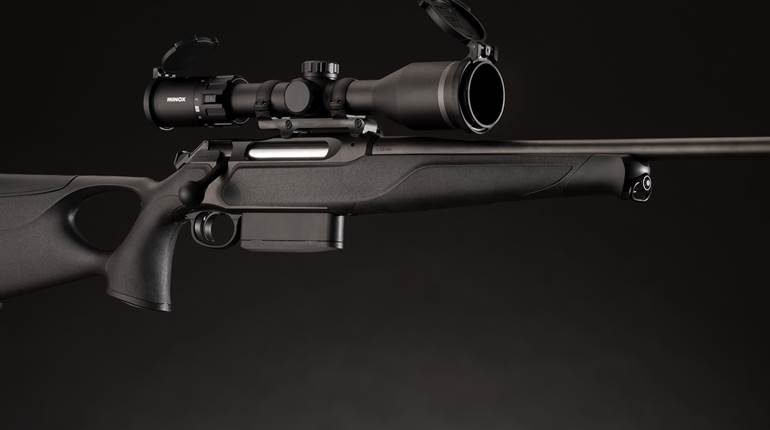
African rifles fall into two categories, those for plains game and those for big game. The two are inversely related between their lure and their utility. A big-game rifle, which will be used sparingly, is far more appealing and mystifying with its romance of big Nitro Express calibers and double-barreled Holland & Hollands stalking though the long grass after huge Cape buffalo. The plains-game rifle, on the other hand, is far less captivating, but you’ll shoot it 20 or 50 times more on kudu, impala, zebra and bushbuck than you ever will buffalo or elephant with your big-game rifle.
But what do we dream about? Big-bore doubles! Nitro Express calibers! Stopping rifles! That’s because Africa is alive in our imaginations thanks to the wonderful legacy of gifted writers like Ruark, Hemingway, Capstick, Hunter and dozens of others who have bequeathed the richest body of hunting literature in the world. I don’t get goosebumps thinking about a .30-‘06, but my eyes gloss over and I sink into blissful reverie as I imagine going after elephant with a Westley Richards drop-lock double rifle in .475 Nitro Express.
Traditionally, “big game” in Africa means three animals: elephant, rhino and buffalo. Personally, I would add hippo (on dry land) to that trio. Big game is, by definition, heavily boned, thick-skinned and dangerous. Novices might wonder why Africa’s most fearsome predator, the lion, is not included with “big game,” but the reason is that a lion is not all that hard to kill. He’s soft-skinned, thinly-boned and goes down easily when hit in the heart-lung area. The fact that an animal is dangerous does not necessarily make him big game, as we see in the case of leopard, hyena, bushbuck or roan (when wounded) and possibly the most vicious animal in Africa pound-for-pound, the honey badger.
Big game requires a big gun. The minimum legal caliber in almost all of Africa for elephant, buffalo, rhino (and lion) is .375 H&H Mag. Most professional hunters (PHs) and experienced clients prefer calibers that start with a “4” such as the .404 Jeffery, .416 Rigby, .416 Rem., .458 Win. Mag. or .470 Nitro Express.
Traditionally, a big game rifle would be a double. However, as Africa opened up and Game Departments came into being, it was economically impossible to equip wardens, rangers and scouts with London’s best. Mauser’s bolt-action model of 1898 was more than up to the task of “control work” in terms of strength and reliability, and you could buy 10 or 20 Mausers for the price of one double of even the most pedestrian sort.
Accordingly, England’s gunmaking houses introduced a number of superb cartridges made for bolt-action rifles (i.e., featuring rimless bottle-neck cases) with the .404 Jeffery emerging as the runaway favorite. Jeffery made thousands of .404s compared to about 150 rifles made in .416 Rigby. (It’s one of those ironies that the .416 Rigby became far more famous than the .404 Jeffery—largely because of Ruark writing about Harry Selby’s .416—but the Jeffery was the workhorse of Africa.)
Of course Holland’s .375 Belted Rimless Nitro Express—better known as the .375 H&H—was and remains the most versatile and forgiving of all the bolt-action cartridges ever developed for big game. The .375 H&H came upon the scene in 1912 as part of the wave of new calibers that the gunmaking houses were feverishly introducing as proprietary calibers. Others, like the .425 Westley Richards and .505 Gibbs, fell by the wayside, but Holland’s .375 attained immortality.
Double Vs. Bolt-Action
Side-by-side rifles were, are and will always be expensive. Even the so-called “affordable” doubles introduced in the past few years by Heym, Kreighoff and Merkel either touch or come close to five-digits. Debating the merits of a double versus a bolt-action is therefore a bit like comparing the merits of private jets with commercial airlines— it just isn’t relevant to most of us.
Look, there’s no denying that any African hunter would pick a classic English double over any bolt-action if told he could have his choice, free and for nothing. If you won the Safari Lottery and you could pick a William Evans sidelock .500 Nitro Express or a Winchester Super Grade Model 70 in .458 Win. Mag., honestly, would you even hesitate?
To reiterate what we’ve all read before on this well-worn topic, a double offers two guaranteed shots, handles and points like a shotgun, carries comfortably due to its wonderful balance and positively reeks with aesthetic pleasure. A bolt-action is accurate, more affordable by a long shot, takes a variety of scopes readily, comes in far more calibers and delivers the third and fourth rounds faster than a double.
Most PHs carry a bolt-action, but almost all of them would opt for a double if the cost wasn’t such an obstacle. My very good friend Michel Mantheakis from Miombo Safaris is an exception. He carries a Dakota Arms bolt-action in .450 Dakota (a souped-up .458 Win. Mag.) and does so by choice. He’s used a double and doesn’t care for them. His Dakota is fitted with a ghost-ring peep sight, which, Michel says, is both more accurate and faster than a double’s V-notch express sights.
Another good friend, Andrew Dawson of Chifuti Safaris, would sooner sell his soul than his William Evans .470 Nitro Express. He literally lives by his double, having stopped more than one very close elephant charge at his feet.
Former PH and Zimbabwe Parks Department control officer Richard Harland used a .458 Win. Mag. with a five-round magazine during most of his career and he swears that he wouldn’t be among us today if he had been armed with a double. Those six rounds of capacity saved his skin more than once when tangled up with panicked elephants in heavy cover.
Looking back at some of the great PHs of the halcyon days of safari hunting, you have more double men by far. John Hunter strongly championed the double and used a Boswell .500 Nitro to shoot more rhino than any one past or present. Philip Percival, “Pops” on Hemingway’s safaris, was a double man as well. Harry Selby was a notable exception with his famous-beyond-reason .416 Rigby. (As noted, Rigby only made about 150 .416s in total; it just wasn’t all that notable “back in the day.”)
The point here is simply this: Yes, a double would be lovely, but if you have a bolt-action in a suitable caliber, you’re more than good to go for big game.
Caliber Considerations
Again we can keep this simple: The best big game cartridge for the average client is the .375 H&H Magnum. The recoil is manageable, excellent factory ammunition is available and virtually every brand of rifle you could possibly want chambers for the .375.
The best thing about the .375 is that it can serve double duty as a plains game rifle. It’s possible to use a bigger caliber for plains game, but unless you’ve developed a tolerance for recoil—which is to say, you’ve learned to focus so intently on sight picture and trigger squeeze that you literally don’t even feel the kick— then you’re better off reserving your “heavy” for big game and taking a second rifle for plains game.
Other than the first-choice .375, I like any of what John Taylor called the “large-medium bores” such as the .416 and .423. Far more .416 Rigbys have been made by Ruger than were ever made by Rigby, and CZ makes an excellent bolt-action as well for the big .416. Remington’s modernized .416 Rem. is a great choice as well.
I’ve long had a warm spot for the .423 caliber, which is known in English circles as the .404, while over on the Continent they refer to it metrically as the 10.75 mm. The most famous .423 is the .404 Jeffery, but there have been modernized versions such as my wildcat, the .425 Express and Dakota’s wildcat, the .423 Dakota.
The granddaddy of bolt-action big-game calibers is the .458 Win. Mag. which was positioned as the equivalent of the .470 Nitro Express, namely a 500 grain slug at 2,150 feet per second (fps). Truthfully, Winchester’s belted rimless magnum never reached much more than 2,000 fps, sometimes only 1,950 fps. Nevertheless, it’s a superb big-game “stopper” and fits in a standard length (.30-’06) action.
There are a number of oddball cartridges for big-game rifles. Robbie Barrkman at Robar built me a .460 G&A on a Model 70 action. Using a .404 Jeffery case necked up to .458, the .460 G&A boosts a 500 grain bullet up to 2,400 fps, which is a considerable tax increase over the .458 Win. Mag. Art Alphin at A-Square was the dean of big bore wildcats with things like the .500 A-Square and .470 Capstick.
Get Close…Then Get Closer
My final comment on big-game rifles concerns the terms and conditions under which they should be employed. The whole point of hunting big game in Africa is the danger element. As Jeff Cooper said, “Danger, not variety, is the spice of life.”
Big game is only dangerous up close. An elephant at 50 yards, if he senses you, will run like the wind that gave you away. An elephant at 10 yards, however, may well come rather than go. Buffalo are docile cows at 100 yards. If alarmed, they run away. Buffalo at 10 yards in the long grass, once again, may well advance rather than retreat.
The simple fact is that buffalo and elephant are equipped with devastating impact weapons—horn, tusk and sheer brute force—but they don’t come with long-range weapons. Buffalo don’t have Hellfire missiles mounted on their flanks and elephant can’t launch a TOW from inside a tusk. You must get close to give big game a fighting chance!
“Close” is a relative term, so let me be specific. For elephant, 25 yards is the maximum distance you should consider taking a first shot. (Obviously wounded and escaping game is a different matter entirely.) For buffalo, 60 yards is the outermost limit. For rhino, the same 25 yard distance as elephant.
I don’t understand for the life of me what motivates a person to shoot a Cape buffalo at 100 yards. You might as well take a pot shot at Elsie the cow at that distance. A buffalo at 100 yards is not in the least bit dangerous.
Consequently, a big-game rifle is ideally used with iron sights, although a low-power variable scope is not a bad option on a bolt-action for buffalo as long as you can dial it down to 1x or 1.5x. A quick-detach mount like that made by Talley is the perfect set-up so you can remove the scope if things get nasty. For elephant or rhino, I’d never use a scope. Never.












